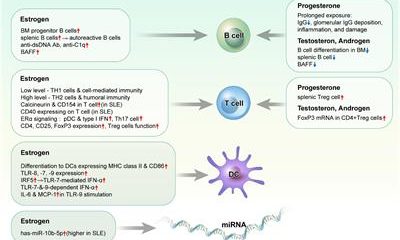Health
What Is The Procedure To Remove A Pilonidal Cyst Infection?

In our journey towards maintaining good health, we sometimes encounter unexpected bumps along the way. One such roadblock is a pilonidal cyst infection. Whether you’ve just discovered this term or are familiar with it, rest assured that you’re not alone. Pilonidal Experts clinic is here to provide you with comprehensive information about pilonidal cysts, their potential dangers, and the procedure involved in their removal.
What is pilonidal cyst disease?
Let’s start by unraveling the mystery behind pilonidal cyst disease. A pilonidal cyst is a small, fluid-filled sac that usually develops near the tailbone, at the top of the buttocks crease. While its name might sound complex, the origin of the term is surprisingly simple – “pilonidal” is derived from the Latin words “pilus” (hair) and “nidus” (nest). This gives us a hint about how this condition forms.
The cyst typically occurs when hair penetrates and embeds itself in the skin. This can result from various factors, including friction, excessive sitting, or hormonal changes. If bacteria find their way into this cyst, an infection can occur, making the area painful, red, and swollen. This is what we refer to as a pilonidal cyst infection.
Is Pilonidal Cyst Dangerous?
Absolutely, understanding the potential dangers of a pilonidal cyst is crucial. While a pilonidal cyst itself is not typically life-threatening, it can certainly cause discomfort and complications if left untreated.
When a pilonidal cyst is infected, it can cause a lot of discomfort because of the inflammation and irritation it causes. A painful abscess forms when the infection develops into a pocket of pus. The abscess might worsen if it is not adequately drained and managed.
It’s possible for an infection to become systemic if it spreads to neighboring tissues. Persistent infections just add to the difficulty of dealing with this illness.
It’s important to note that the discomfort and pain associated with a pilonidal cyst infection can impact daily activities and quality of life. Sitting, walking, and even sleeping can become challenging. Moreover, the risk of complications increases if individuals try to manage the infection on their own without proper medical intervention.
Seeking medical attention for a pilonidal cyst infection is highly recommended. A qualified pilonidal cyst doctor can accurately diagnose the condition, assess its severity, and recommend appropriate treatment. Early intervention can prevent the infection from worsening and can potentially eliminate the need for more invasive procedures.
While a pilonidal cyst itself may not be dangerous in the sense of being life-threatening, an infected cyst can lead to significant pain and discomfort, as well as potential complications. Timely medical care is essential to address the infection, manage symptoms, and prevent the situation from escalating.
Consulting a Doctor for Pilonidal Cyst: Your First Step to Relief
When it comes to pilonidal cysts, seeking professional medical advice is your crucial first step towards finding relief. At Pilonidal Experts clinic, our dedicated team of medical professionals specializes in diagnosing and treating pilonidal cysts with precision and care.
Upon your visit, you’ll experience a comprehensive evaluation that begins with a thorough physical examination. To accurately assess your condition, additional tests such as imaging might be recommended. Our expert doctors will then discuss your diagnosis in detail, ensuring you understand your condition and the available treatment options.
Whether your pilonidal cyst infection requires antibiotics and proper hygiene practices or necessitates a surgical procedure for removal, our team will tailor the treatment plan to your specific needs. Our goal is to provide effective solutions that alleviate pain, discomfort, and any potential risks associated with the cyst.
Don’t let a pilonidal cyst disrupt your well-being. Reach out to Pilonidal Experts clinic and take the first step towards personalized care and lasting relief. Your health and comfort are our top priorities, and we’re here to guide you through every stage of your journey to recovery.
The Procedure to Remove a Pilonidal Cyst
Curious about the procedure to remove a pilonidal cyst? Let us walk through the steps involved:
1. Preparation:
Before the procedure, your doctor will provide you with instructions on how to prepare. This might include fasting for a certain period if surgery is planned.
2. Anesthesia:
The procedure is usually performed under local anesthesia, ensuring that you are comfortable and pain-free during the surgery.
3. Incision and Drainage:
If an abscess is present, your doctor will make a small incision to drain the pus and relieve the pressure. This provides immediate relief from pain and discomfort.
4. Cyst Removal:
In cases where the cyst itself needs to be removed, your doctor will carefully excise the cyst along with any infected tissue. The goal is to promote proper healing and prevent recurrence.
5. Closure:
Once the cyst is removed, the wound is either left open to heal from the inside out or closed with stitches, depending on the size and severity of the excision.
6. Recovery:
After the procedure, you’ll receive instructions on wound care, hygiene practices, and follow-up appointments.
Keep in mind that every situation is unique, and the surgeon’s advice and your individual condition will determine the specifics of the treatment.
Conclusion
In the journey of life, health hiccups like pilonidal cysts can arise unexpectedly. Understanding the nature of a pilonidal cyst infection, its potential dangers, and the procedure for its removal can provide you with the information and confidence you need to tackle this challenge head-on. Pilonidal cyst symptoms and concerns are best addressed by consulting a specialist in the field, such as those practicing at the Pilonidal Experts clinic. You may improve your health and well-being with their help and by taking preventative measures.












